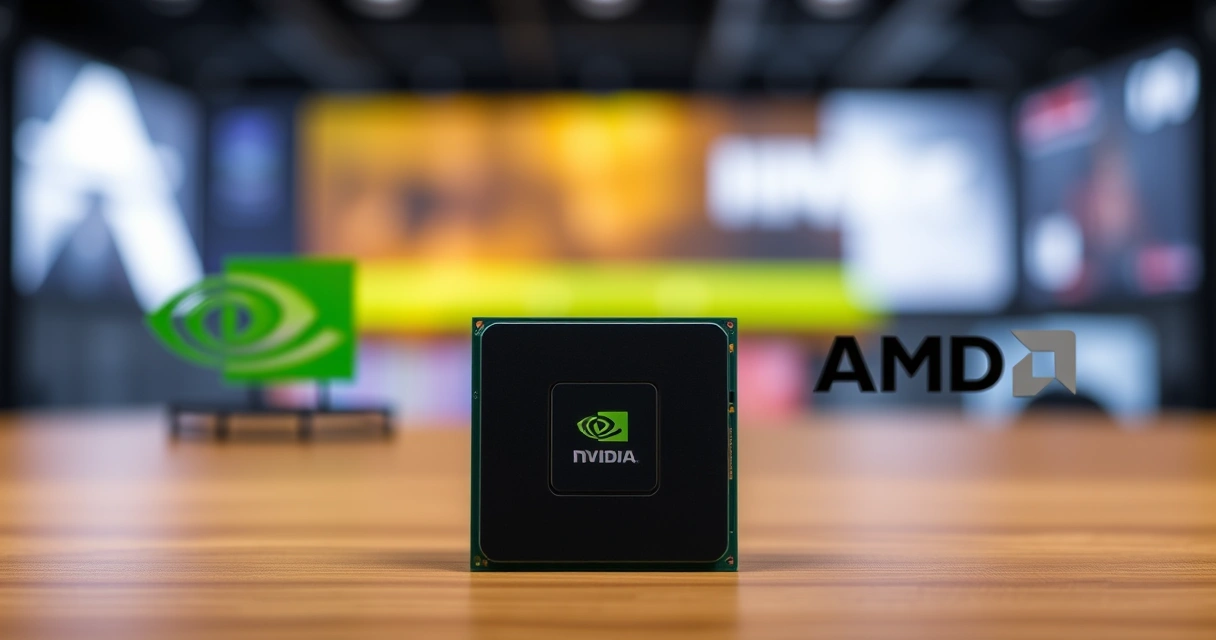Nvidia and AMD to Hand Over 15% of China Chip Sales to US Revenue, Official Reveals
The semiconductor industry has recently witnessed a significant shift in the dynamics between major players and the geopolitical landscape. Nvidia and AMD, two of the leading manufacturers in the semiconductor sector, are reportedly set to transfer 15% of their chip sales revenues from China to the United States. This development has raised eyebrows within the industry, as it highlights the growing tensions between the US and China while also pointing to shifting market strategies among technology companies. Understanding the implications of this decision is crucial for stakeholders in the semiconductor industry.

This article delves into the reasons behind Nvidia and AMD’s decision, the potential impact on their business models, and the broader implications for the semiconductor industry. We will also explore how this move fits into the larger context of US-China relations and what it means for future technological advancements and collaborations.
The Context of the Semiconductor Industry
The semiconductor industry is a cornerstone of modern technology, providing essential components for everything from smartphones and computers to advanced military equipment. Global demand for chips has surged in recent years, driven by the expansion of artificial intelligence (AI), the Internet of Things (IoT), and 5G technology. China, as one of the largest consumers of semiconductor products, plays a pivotal role in this ecosystem.
However, the relationship between the US and China has become increasingly strained, particularly in the realms of trade and technology. In response to security concerns and competitive pressures, the US government has implemented various restrictions and tariffs that directly affect the semiconductor industry. This backdrop has prompted companies like Nvidia and AMD to reevaluate their market strategies and revenue channels.
Understanding the 15% Revenue Transfer
The decision by Nvidia and AMD to allocate 15% of their sales revenue from China to the US is a strategic maneuver that aims to align with US government policies and foster goodwill amidst ongoing trade tensions. This allocation is not merely a financial transaction; it signifies a shift in operational focus and priorities for these tech giants.
Reasons Behind the Revenue Shift
- Regulatory Compliance: With increasing scrutiny from US regulators on foreign transactions, Nvidia and AMD are likely aiming to ensure compliance with evolving legislation that governs the technology sector.
- Market Access and Partnerships: By channeling revenue back to the US, these companies may be seeking to enhance their relationships with US-based clients and governmental entities, potentially leading to lucrative contracts.
- Mitigating Risks: Geopolitical tensions can create instability, and this revenue shift could serve as a hedge against potential losses due to sanctions or trade restrictions imposed by either country.
- Strengthening the US Semiconductor Ecosystem: This move could contribute to bolstering the US semiconductor manufacturing landscape, which is crucial for national security and technological independence.
Impact on Nvidia and AMD
Both Nvidia and AMD have established themselves as leaders in the semiconductor market, particularly in the graphics processing unit (GPU) and central processing unit (CPU) sectors. The 15% revenue transfer could have profound implications on their business operations and market strategies.
Financial Implications
The immediate financial effect of handing over 15% of sales revenue could impact their profit margins. By shifting a portion of their revenue from China to the US, both companies may face increased operational costs associated with compliance and local manufacturing. However, the potential for new contracts and partnerships in the US could offset these costs over time.
Market Positioning
This strategic shift may also influence how investors view Nvidia and AMD. As the companies align themselves with US policies and demonstrate a commitment to the domestic market, they could enhance their reputations, appealing to investors who prioritize corporate responsibility and ethical practices. This could lead to increased stock valuations and investor confidence.
Broader Implications for the Semiconductor Industry
The decision by Nvidia and AMD has far-reaching implications for the semiconductor industry as a whole. This move may signal a trend where technology companies prioritize compliance with national policies over traditional revenue-generating strategies in foreign markets.
Shifts in Global Supply Chains
The semiconductor supply chain is complex and globalized. As companies like Nvidia and AMD adjust their revenue strategies, we may see a shift in supply chains that favor US-based manufacturers. This could lead to increased investments in domestic semiconductor production, which is a critical step toward achieving technological independence for the US.
Influence on Competition
As Nvidia and AMD recalibrate their business models, competitors may feel pressured to follow suit. Companies operating in the semiconductor space will likely need to consider their own geopolitical strategies and how they can adapt to the changing landscape. This could foster innovation and lead to new partnerships as companies seek to navigate the evolving market conditions.
Frequently Asked Questions (FAQs)
1. What prompted Nvidia and AMD to make this decision?
The decision was influenced by regulatory compliance issues, market access opportunities, risk mitigation strategies, and a desire to strengthen the US semiconductor ecosystem against geopolitical challenges.
2. How will this impact prices for consumers?
The transfer of revenue itself may not directly impact consumer prices, but any changes in production costs or shifts in supply chains could lead to eventual price adjustments in semiconductor products.
3. Will other companies follow Nvidia and AMD’s lead?
It is likely that other companies in the semiconductor industry will consider similar strategies, especially those that rely heavily on Chinese markets and are subject to US regulations.
4. How does this affect US-China relations?
This move may exacerbate tensions between the US and China as it signals a shift in market dynamics, potentially leading to more stringent regulations and tariffs.
5. What are the long-term implications for the semiconductor industry?
In the long run, this could lead to a more fragmented global market, with companies prioritizing compliance with national policies over traditional revenue strategies, ultimately reshaping industry dynamics.
Conclusion
The decision by Nvidia and AMD to hand over 15% of their China chip sales to US revenue marks a pivotal moment in the semiconductor industry. Amidst geopolitical tensions and evolving market dynamics, this strategic shift could redefine how technology companies operate on a global scale. By realigning their revenue channels, Nvidia and AMD are not only ensuring compliance with US policies but also potentially positioning themselves for future growth in a rapidly changing landscape. As the semiconductor industry continues to evolve, stakeholders must stay informed and adapt to the new realities of this crucial sector.
📰 Original Source
Este artigo foi baseado em informações de: https://www.investing.com/news/stock-market-news/nvidia-and-amd-to-pay-15-of-china-chip-sale-revenues-to-us-government-ft-reports-4181731


